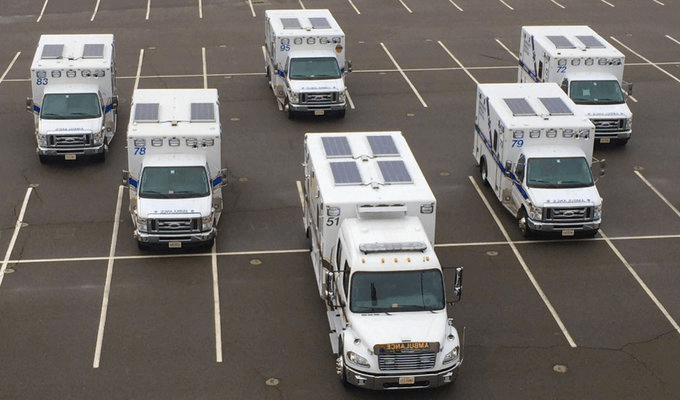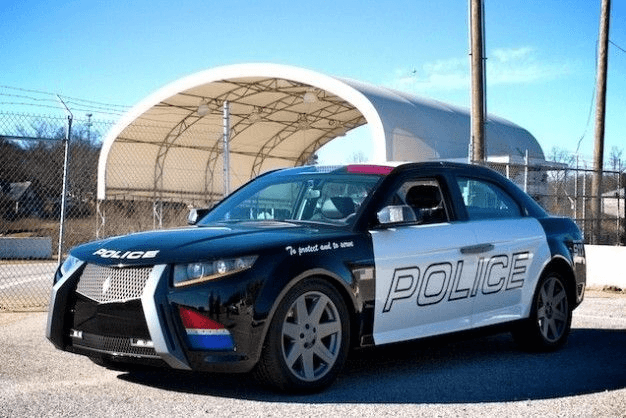Rising environmental concerns demand sustainable energy sources amid climate change and fossil fuel depletion. Renewable energy comes from a natural process. It is clean, offers an alternative to fossil fuels, and is a green solution to global challenges.
Renewable energy’s major forms are wind, solar, geothermal, hydroelectric, and biomass. With emergency or rescue vehicles, they can improve disaster response, reduce emissions, and foster resilience. Rescue vehicles are crucial in safeguarding lives.
The article highlights considerations on the significance, integration of, and harnessing of renewable energy for rescue vehicles. We shall also briefly look at issues surrounding the integration of solar power preparedness in times of crisis.
Brief Overview of the Importance of Emergency Vehicles
They act as frontline responders in crises, playing an integral role in saving lives and property. The speed of their deployment, trained staff, and specialized equipment enable responses to a wide range of emergencies.
Ambulances
People facing life-threatening situations are given with life-saving medical care and transportation. Equipped with up-to-date medical equipment and staffed by trained paramedics, ambulances significantly improve patient outcomes in emergencies. To read about an example of a solar-powered ambulance, check here.
Fire Trucks
They are specially designed for firefighting and management of hazardous materials-related incidents. They bring water, firefighting foam, and specialized tools to control and extinguish the fire. This prevents the fire from spreading in densely populated areas.
Police Cars
They symbolize law enforcement and public safety. They facilitate rapid response to crime, accidents, and emergencies. Criminal activity is known to stop simply by their presence.
Search and Rescue Vehicles
They prove to be critical in a natural disaster or incident involving a missing person. These vehicles, equipped with specialized tools and personnel, help locate and rescue people trapped in hazardous environments.
Disaster Relief Units
They provide essential support during large-scale emergencies, ensuring community safety and restoring normalcy with fast response times, specialized equipment, and trained staff.
Harnessing Renewable Energy for Emergency Vehicles
The integration of renewable energy into rescue vehicles and their ancillary infrastructure can yield numerous advantages.
Emissions Reduction
Substituting conventional fossil fuel-powered engines with electric or hybrid systems enables emergency vehicles to curtail their carbon footprint and air pollution emissions significantly. This transition aligns with worldwide endeavors to combat climate change and enhance the air quality in urban locales.
Dependable Power Sources
Renewable technologies like solar panels and wind turbines can be seamlessly incorporated into emergency vehicle designs, providing a consistent power source for vital systems and equipment. This ensures the sustained operational capacity of emergency vehicles, even in remote or disaster-stricken areas with restricted fuel access.
Enhanced Resilience
In scenarios where disasters disrupt fuel supply chains, rescue vehicles equipped with renewable energy capabilities can uphold their functionality. Firefighting, law enforcement, medical care, and search and rescue activities are add-ons of recovery efforts and disaster management responses.
Energy Autonomy
Embracing renewable energy in emergency vehicles can lead to decreased reliance on fossil fuels, thereby bolstering power security and diminishing the susceptibility of these vehicles to fuel price fluctuations or supply interruptions.
Public Awareness
They hold significant visibility within communities. The integration of renewable energy into their designs can serve as a compelling demonstration of sustainable practices, heightening public consciousness and encouraging broader adoption of clean power technologies.
Integration of Solar Energy into Emergency Vehicles
The complete integration of solar energy into rescue vehicles encompasses various aspects, each contributing to improved performance, durability, and eco-friendliness:
- Photovoltaic Systems: Integrating solar panels in rescue vehicles generates electricity, enabling auxiliary systems for optimal functionality during operations.
- Battery Storage: Advanced power storage systems like lithium-ion batteries enable emergency vehicles to store solar energy, improving service reliability during low-light conditions.
- Hybrid Powertrains: Hybrid rescue vehicles combine traditional engines with electric propulsion, using solar panels for sustainable, efficient response.
- On-Site Deployment: They deploy portable solar panels or generators for power, lighting, and communication during disaster response.
These are just the basic description of what is required. You can visit https://www.solarlightingitl.com/solar-emergency-vehicle-lighting-system/ to get more information on the setup process. You can also learn about other areas to apply this solar technology.
Solar Power: A Robust Emergency Preparedness and Beacon Amid Crisis
The prevalence of natural disasters like floods, earthquakes, wildfires, and hurricanes in this century is making a shift to resilience-based preparedness in emergency response systems essential. Harnessing the sun’s energy through photovoltaic (PV) systems – using solar power has become a beacon of hope amidst the uncertainties of disaster response.
Reliability
The energy of the sun is a consistent and abundant resource, even in disaster-stricken areas. Solar systems provide a reliable power source, reducing dependence on conventional energy infrastructure that might falter during emergencies.
Energy Autonomy
Solar systems empower communities with energy autonomy, enabling them to generate their power locally. This becomes crucial during disasters when centralized power grids might be compromised.
Emissions Reduction
Its production is clean and devoid of greenhouse gases or pollutants. This aligns with the objective of curbing carbon emissions and countering climate change, even during emergency operations.
Longevity
They boast a lengthy lifespan which necessitates minimal maintenance, making them durable assets during emergencies and contributing to continued community sustainability.
Holistic Integration of Solar Systems in Emergency Preparedness
The integration of solar systems into emergency preparedness strategies encompasses various dimensions, each contributing to a more resilient and sustainable approach.
Advantages and Impacts of Solar Systems Integration in Emergency Preparedness
The integration yields many advantages with far-reaching effects:
- Resilient Response: Solar-powered systems strengthen the reliability and independence of crisis response infrastructure, reducing vulnerability to fuel shortages and grid breakdowns.
- Community Empowerment: They empower communities to manage their energy needs, fostering self-reliance and community-driven resilience.
- Cost Efficiency: Solar integration can lead to reduced energy costs and operational savings over time, particularly in remote or disaster-affected regions.
- Climate Action: By diminishing reliance on fossil fuels, they contribute to climate action, aligning disaster response with global endeavors to counter climate change.
- Education and Awareness: Solar-powered emergency preparedness systems serve as educational tools, increasing awareness about renewable energy and sustainable practices within communities.
Challenges and Considerations of Solar Systems Integration in Emergency Preparedness
While solar integration holds considerable promise, several challenges deserve attention:
- Initial Expenses: The upfront investment in solar systems and storage technology might pose financial obstacles for some communities and organizations.
- Maintenance: They require regular upkeep to ensure optimal performance, which can be demanding during post-disaster situations.
- Technology Adoption: Their integration requires technological adaptation and specialized training for personnel, which might necessitate capacity-building efforts.
Conclusion
The convergence of renewable energy and emergency vehicles has led to innovation and sustainability in disaster response. This shift mitigates environmental degradation and enhances the reliability and effectiveness of emergency response systems. Solar energy integration in crisis preparedness promotes resilience, sustainability, and self-sufficiency.
It also encourages emission reduction, resource conservation, and community cohesion. Solar-powered systems are a revolutionary force, enhancing not only emergency response systems but also community resilience and the sustainability of our common world.


